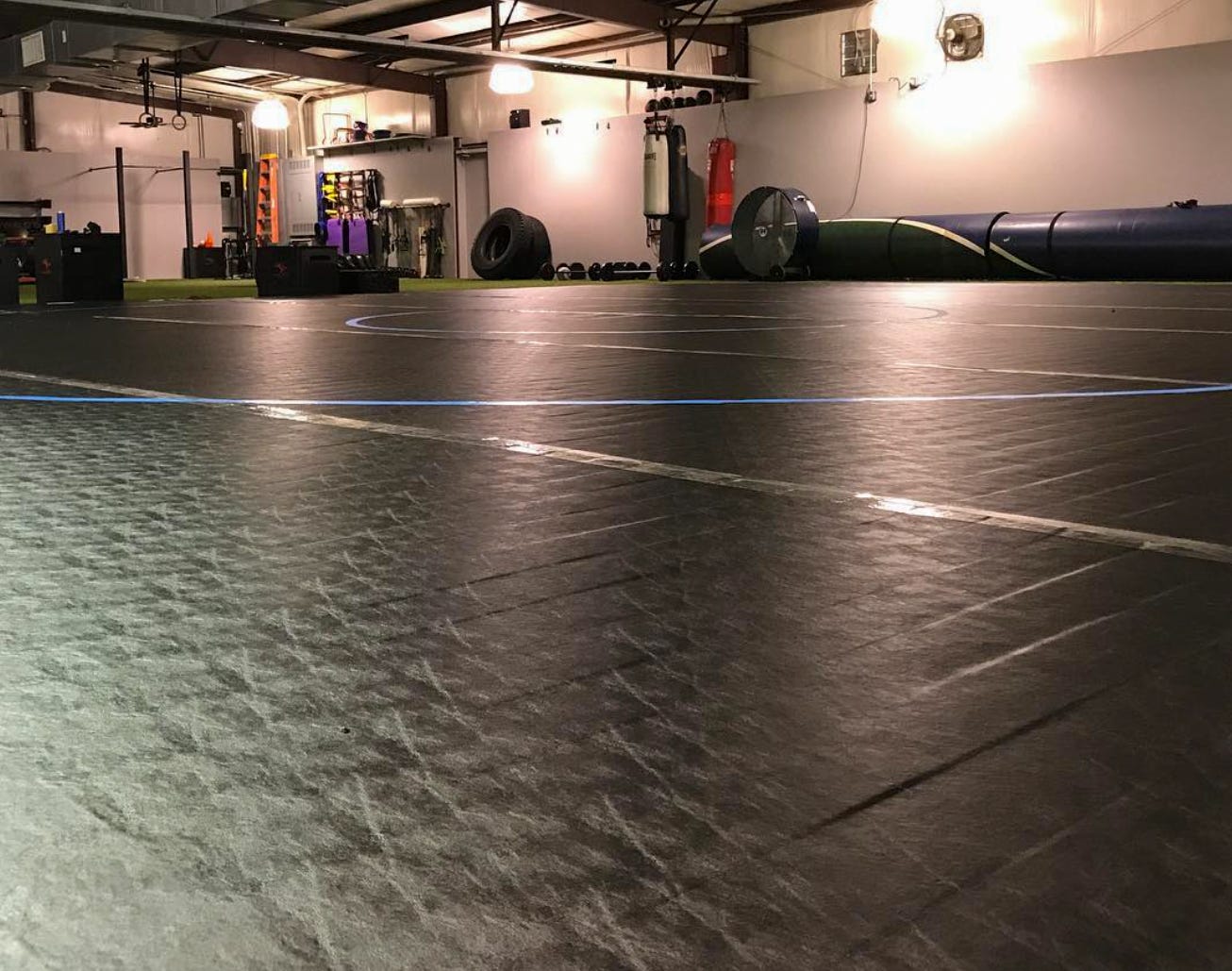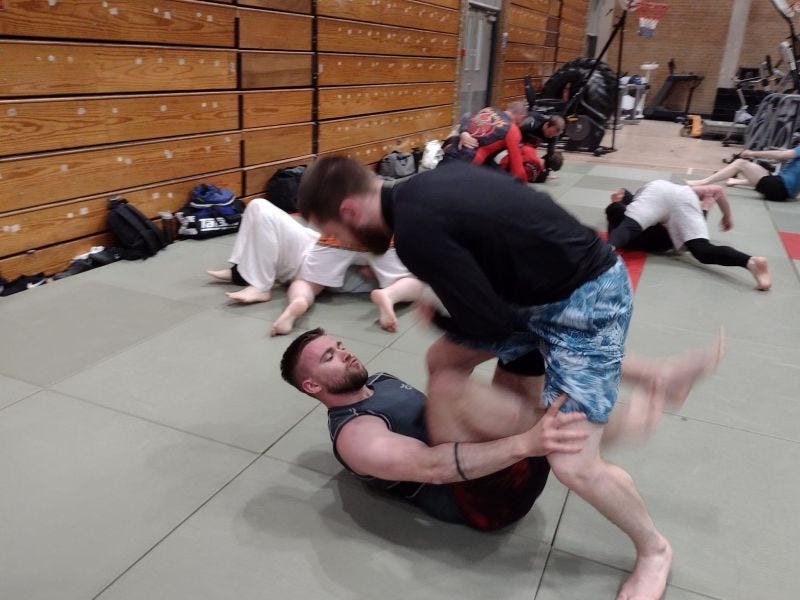The art of living is more like the wrestler’s art than the dancer’s in this regard, that it must stand ready and firm to meet whatever happens to it, even when unforeseen. — Marcus Aurelius
Martial arts to many is more than just combat. It is more than sport, or physical activity. It is a philosophy, a discipline, and a way of life that transcends the dojo and the mats. It is about learning to live with purpose, to embrace adversity, and to walk the path of self-improvement with unwavering commitment.
For those who have trained in the arts, myself included, for a limited period when I was younger; the lessons learned extend far beyond the physical. It relays a message of honour, patience, resilience, and the ability to navigate chaos with a clear mind.
Many of the Philosophers we’ve come to study and debate engaged in such disciplines, and so to add authenticity to this piece, I’ve included a recorded conversation with my old friend
His experience far outweighs mine in this remit (mine being limited to Ju-Jitsu), and he remains to this day an avid practitioner and student of Martial Arts.
We explore his journey as a martial artist and how it intertwines with the principles of Stoicism, Bushido, and beyond. Shaping not just a fighters mindset, but also a thinkers.
Dreams of Flight and the Cold Reality of Discipline
“When we blather about trivial things, we ourselves become trivial, for our attention gets taken up with trivialities. You become what you give your attention to,” – Epictetus, Quoted in the Art of Living
“Taekwondo was my entry point,” Mark recalls, his voice laced with nostalgia. “As a kid, watching martial arts films, I wanted to be the hero leaping through the air, kicking down villains, defying gravity. It felt like stepping into a world where anything was possible.”
Taekwondo, much like Plato’s notion of the ideal forms, introduced him to a separate degree of discipline and structure. The hierarchy, the rituals, and the demand for respect shaped his ability to manage emotions, embrace failure, and set ambitious goals from an early age.
“You learn quickly that progress isn’t instant. Mastery demands patience. But more than that, it teaches you humility. You bow, not just to your seniors but to the art itself.”
Kickboxing and the Baptism by Fire
At sixteen, he then transitioned to kickboxing a shift akin to moving from the controlled reason of an aged Socrates to the raw existentialism of Nietzsche. “It was different. More real. More raw. Less ceremony, more survival.”
Training was brutal. There was no room for idealistic perfection, only the harsh reality of combat. The motto was clear: Train hard. Fight easy.
“My first sparring session in that dingy garage. Barefoot on carpet tiles, was a reality check. I had a plan. But plans dissolve the second a glove crashes into your face.”
Much like Nietzsche’s concept of amor fati embracing fate rather than resisting it. Mark learned to welcome the chaos, to train his mind to react rather than overanalyse. “You have to quiet your mind. You learn to react, not just think. This is controlled chaos—where anger and fear must be harnessed into focus.”
Kickboxing taught him to embrace discomfort, to make peace with the storm. It was an early lesson in Stoicism, accepting that while one cannot control everything, one can always control their response.
The Thinking Man’s Fight
Where kickboxing was raw and visceral, Brazilian Jiu-Jitsu (BJJ) introduced another dimension to Mark’s training: intelligence, strategy - akin to Sun Tzu’s Art of War.
“BJJ is human chess. Strength means nothing if you don’t know how to apply it. I was humbled on my first roll; outmanoeuvred by someone smaller, weaker, but infinitely more skilled. That was the moment I got hooked.” (An experience I can testify to with my own practice of BJJ.)
There is a code here, an unspoken honour among those who train, kind of like the virtue ethics of Aristotle. “You protect your training partners, because without them, you don’t grow. You give 100%, but you do so with control. Aggression is useless without precision.”
Humility is not optional in BJJ. “Ego gets crushed daily. There’s a saying, ‘Leave your shoes and your ego off the mat.’ You are accountable for your mistakes, and the only way forward is through learning.”
Failure is part of the process, much like in life. “You tap, you reset, you learn. Every loss is a lesson. Every struggle an opportunity. The sooner you accept this, the better you become.” It echoes Seneca in the Moral Epistles around adversity:
…Difficulties strengthen the mind, as labour does the body.
Martial Arts and Stoicism
….being constantly mindful, alert, and prepared in advance to meet life’s challenges. The wise man, in other words, is never to be caught off guard by the blows of fortune. — Donald Robertson
It is here that the parallels between Martial Arts and Stoicism become undeniable to me. The concept of the dichotomy of control knowing what is in your power and what is not, is evident in every aspect of combat.
Mark reminds me; “You can prepare, you can train, but you can’t control your opponent’s skill or their choices. What you can control is your own response, your own adaptability.”
Yet, control itself is often an illusion. In a fight, external factors dictate the flow of battle, much like in life. This is where the practice of Premeditatio Malorum becomes invaluable: the visualisation of worst-case scenarios, the mental preparation for what lies beyond one’s grasp.
“You train for every possibility. You prepare for the unexpected. And when the moment comes, you are ready not because you can control everything, but because you have conditioned yourself to remain unshaken.”
Some may see martial arts as just fighting. But those who walk the path understand it is about peace. Violence is never the goal. It is about control of body, of mind, of emotion.
For those of us who do not practice, there is still much to learn from the way of the warrior.
A practitioner must shift from the mindset of a learner to a performer. Just like in ethics based Philosophies of living, digesting volumes of works are no good without the practical application of said writings.
Read the philosophies behind the arts. Observe the composure of a martial artist in chaos. It’s not about aggression ultimately, it’s about mastery over oneself.
To those seeking a guiding philosophy, we remind you of the Eight Virtues of Bushido, the code of the samurai:
Rectitude (Gi): Do what is right, even when it is hard.
Courage (Yu): Be brave, but not reckless.
Compassion (Jin): Show kindness and empathy.
Respect (Rei): Treat others with courtesy.
Honesty (Makoto): Be truthful and genuine.
Honour (Meiyo): Live with integrity.
Loyalty (Chugi): Stand by those you trust.
Self-Control (Jisei): Master your emotions and actions.
The journey of a martial artist never truly ends. It is an eternal process of refinement body, mind, and spirit. It is the pursuit of balance, the dance between discipline and freedom, power and restraint, control and surrender. And so to with the practice of any Philosophy.
As a final note, he recalls; “Martial arts is life in microcosm. The struggles, the victories, the defeats. But if you train with an open mind, if you embrace the lessons, you walk away not just a better fighter, but a better person.”
And in the end, isn’t that what we’re striving for? I know I am.
Until next time comrades,
Memento mori,
Enda (The Irish Stoic)








Such an interesting read!
If every child learned martial arts the world would be less violent.